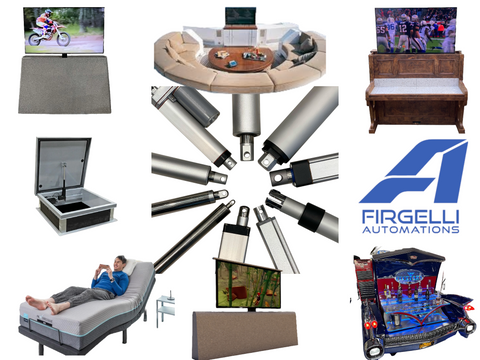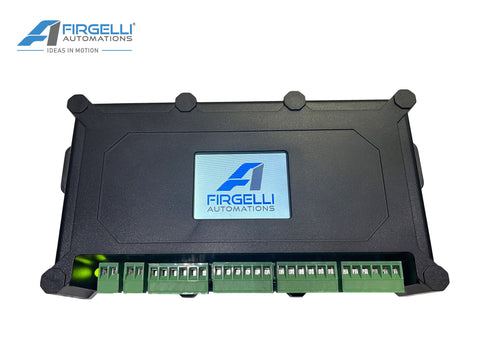Fundamentals of Electric Linear Actuators: Enhancing Precision and Control in Robotics, Engineering, and Beyond

Electric Linear Actuators (ELAs) are an essential component in the modern toolkit of engineers, roboticists, industrial designers, and the DIY enthusiast. Capable of converting rotary motion to linear force, ELAs are versatile, precise, and can be found in a myriad of applications, from high-tech robotic arms to the lifting mechanisms in your favorite piece of furniture. This in-depth exploration will unravel the intricacies, benefits, and future trajectories of ELA technology, empowering you to make informed decisions and unlock new possibilities in your projects.
Understanding Electric Linear Actuators
An electric linear actuator is a device that creates straight-line motion through electrical energy. Often compared to their hydraulic and pneumatic counterparts, electric actuators provide cleaner, quiet, more controllable motion. There are several types of ELAs including ball screw, belt-driven, and rod-style electric actuators, each with their advantages and applications.
The Types of Electric Linear Actuators
Rod Linear Actuators: Compact and Robust
Rod-style actuators are perhaps the most recognizable. They consist of a rod that extends and retracts in a linear motion. These are used in many applications from some that require just a simple movement from A to B, but also higher precision applications that require a high degree of accuracy and stability, such as in medical devices and assembly line machines.

Belt-Driven Actuators: Speed and Versatility
Belt-driven actuators utilize a belt and pulley system to create linear motion. This design offers rapid movement and is a popular choice in pick-and-place systems, packaging equipment, and material handling. These are great for very high speed projects, but the speed trade's off with force, so typically belt driven actuators dont offer much force compared to a leadscrew driven Actuator.
Choosing the Right Actuator for Your Application
Selecting the ideal Actuator requires a thorough understanding of your project's requirements. When considering a linear actuator, key parameters to analyze include speed, force, and stroke length.
Navigating the Speed-Force Spectrum
Actuator's often require a trade-off between speed and force. Higher force can mean sacrificing speed and vice versa. Understanding this relationship is critical in selecting an actuator that can best serve your application’s needs. We have written a detailed article about this in a post called "Linear Actuators 101" in this article we go into great depth about this trade-off plus much more.
Determining the Appropriate Stroke Length
Stroke length, or the distance an actuator can move from end to end, is another critical aspect. Longer strokes often require longer actuators and can affect running times, so be sure to match the stroke with your specific spatial and timing requirements.
Controlling the Motion: Options and Considerations
The method of control is as important as the actuator itself. From simple up-down switch options to more sophisticated control with feedback systems, the level of control must be harmonized with the precision and repeatability required by your application.
Mastering the Control: Tactics for Precision
Controlling an electric linear actuator with precision is paramount, particularly in applications where accuracy is non-negotiable. This segment outlines approaches to control linear actuators, ranging from basic to advanced.
The Simplicity of a Switch
Basic control systems rely on switches for command inputs, serving as the foundation for both manual and automated systems. Reversing the polarity of the motor with a simple switch can cause the actuator to change direction, offering a cost-effective and straightforward control method.
For more sophisticated needs, feedback Actuators are required, using sensors such as Hall effect sensors or encoders to provide the control system with information on the actuator’s position. With this data in hand, the controller can finely adjust the actuator's behavior, setting limits, directing positions, and modulating speed with precision.
Shedding Light on Actuator Applications
The use cases for electric linear actuators are diverse and expansive, touching on a broad spectrum of industries and products. From enhancing automation in the home to empowering precision engineering projects, electric linear actuators are at the heart of innovations around the globe.
An Array of Industries Under its Influence
The strength, precision, and versatility of Actuators cater to various sectors, including aerospace, automotive, manufacturing, and more. They're instrumental in applications such as production line conveyors, aircraft flap adjustments, and automotive throttle position control, showcasing their adaptability.

Real-World Actuator Solutions
Beyond the shop floor, Actuators are found in home automation, agricultural equipment, and even motion simulators. They power standing desks, adjust solar panels, and fine-tune the focus on photography equipment, demonstrating their domestic and consumer-oriented utility.
Advantages of Choosing Electric Linear Actuators
Electric linear actuators offer several advantages over their hydraulic and pneumatic counterparts. These advantages include precision, energy efficiency, and a more compact and manageable size, making them an attractive choice in many scenarios.
Precision and Repeatability: The Actuator Advantage
Actuators provide unparalleled precision and repeatability, making them ideal for applications that demand exacting standards.
Energy Efficiency and Environmental Friendliness
Compared to hydraulic systems, Actuators are more energy-efficient and environmentally friendly, with no hydraulic fluids to dispose of and less energy required to operate.
Compact and Clean Design
The compact design and lack of fluid leaks make electric actuators easier to package and maintain, while also presenting a cleaner appearance and environment to work within.

Choosing Wisely: Actuator Selection and Maintenance
When selecting and maintaining electric linear actuators, there are several factors to consider to ensure optimal performance and longevity. Proper selection and care can maximize the return on your investment and prevent critical failures.

Choosing the Right Actuator: Factors to Consider
When selecting an electric linear actuator, think about the environmental factors, such as temperature and dust, that could affect performance, as well as the duty cycle and load characteristics of your application.
Installation and Maintenance Best Practices
Regular maintenance, including lubrication and inspection of key components, can prevent damage and ensure smooth operation. Installation best practices, like proper mounting and alignment, are also crucial to the actuator's performance and lifespan.
The Constant Evolution of Linear Actuators
The field of electric linear actuators is dynamic, with continuous innovation and advancement in technology. Staying abreast of the latest trends can provide insights into the future of Actuators and the potential implications for your projects and industries.
The Rise of Smart Actuators
Smart actuators with integrated control systems and wireless connectivity are becoming more prevalent, offering remote monitoring and advanced control capabilities.

Looking Forward: Future Trends and Implications
As technology advances, we can expect to see increased miniaturization, improved materials, and more intelligent control systems, leading to Actuators that are even more capable, versatile, and user-friendly. The applications are set to expand, with potential implications for everything from space exploration to our daily lives.
Conclusion: Embrace the Power of Electric Linear Actuators
Electric linear actuators represent the nexus of precision, control, and technological innovation. By understanding their fundamental principles and staying informed about the latest developments, you can harness the full potential of ELAs in your projects. Whether you're devising the mechanisms of the future or enhancing existing systems, the diligent application of ELAs can serve as a powerful catalyst for your endeavors.
Embark on the journey to unleash the full potential of electric linear actuators in your work. From selecting the right actuator for your application to mastering its control and ensuring proper maintenance, the depth and breadth of their utility are as expansive as your imagination. Explore the world of electric linear actuators and witness how they're redefining the boundaries of precision, control, and mechanization.

